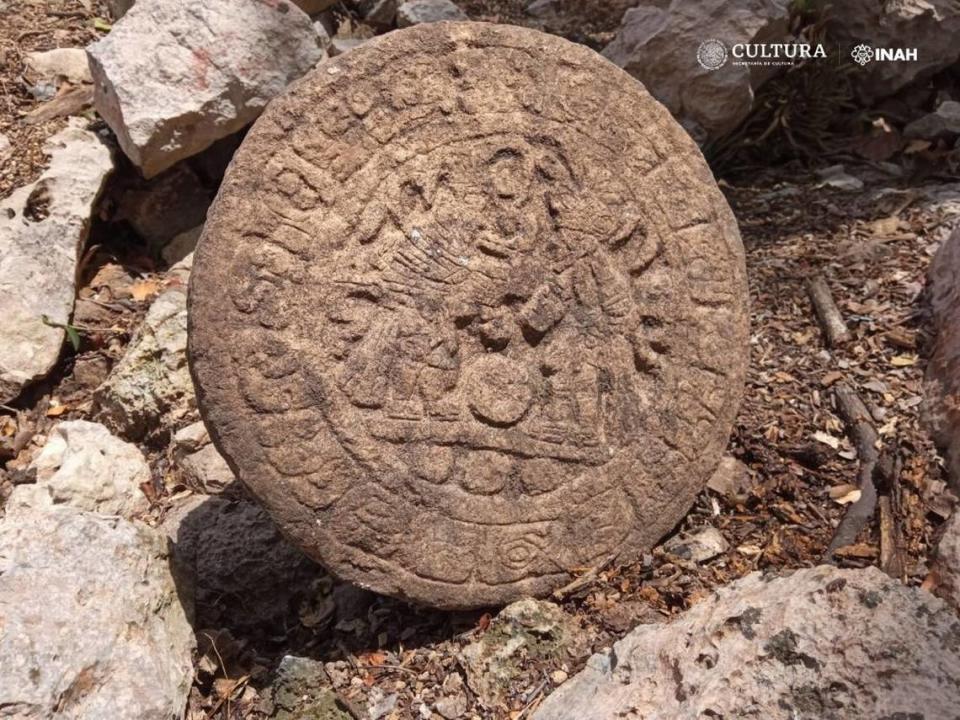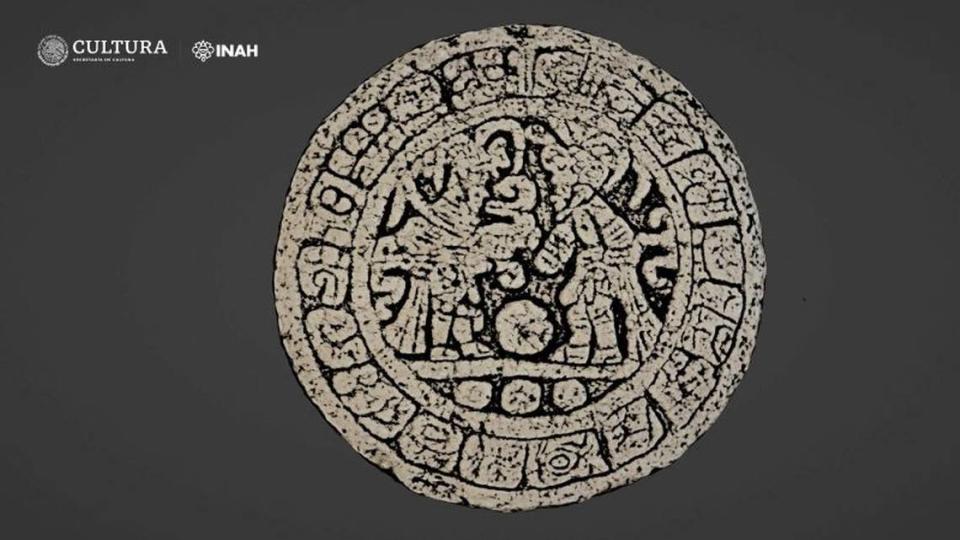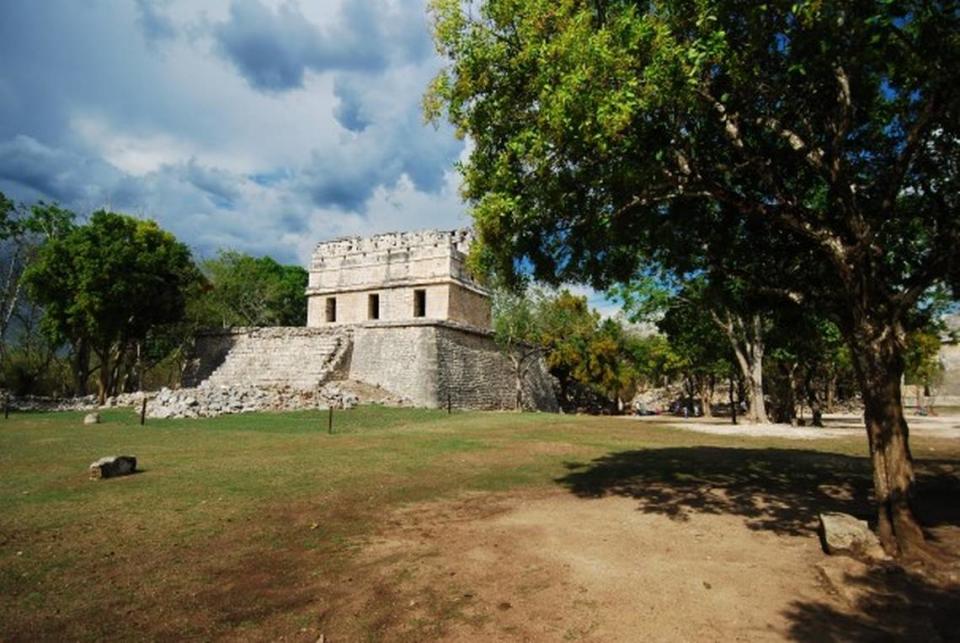1,100-year-old monument to Mayan ball game found buried at iconic Mexican pyramid
Carefully digging through the soot-colored soil at an iconic pyramid in Mexico, archaeologists hit something hard. They took a closer look and quickly realized this was no ordinary stone.
The archaeologists at Chichén Itzá unearthed a heavy circular stone, according to a Monday, April 10, news release from Mexico’s National Institute of Anthropology and History. The stone was about a foot in diameter and almost four inches thick, weighing nearly 90 pounds.
The slab was initially found upside down, the release said, but when archaeologists turned it over, they found themselves face-to-face with two intricately-carved figures surrounded by Mayan hieroglyphics.

The left-hand figure has a feathered headdress and a sash decorated with flowers, experts said. A scroll, a representation of his breath or voice, hovers in front of his face. The right-hand figure wears a headdress that experts described as a snake turban. He also wears protective sports gear.
Around the outside edge, 18 Mayan hieroglyphics surround the figures. This is the first complete set of Mayan hieroglyphics to be found at the Chichén Itzá site in over 11 years, archaeologist Francisco Pérez Ruiz said in the release.
Researchers translated the hieroglyphics and found a date roughly equivalent to 894 AD. The figures were also identified as ball players.
These carvings marked the stone as a monument to an important Mayan ball game event, experts said.

Like other pre-Columbian civilizations in central and south America, the ancient Mayans played a sport with a rubber ball on “I” shaped courts known as playing alleys, the Yucatan Times reported in 2020. Either end of the ball court had an end zone for scoring, and the sides of the alley had tall sloped walls used to keep the ball in play.
The exact rules of this ball game are uncertain, but historical sources have preserved a general understanding of how it was played the Yucatan Times reported.
Two teams of two to four players faced off to score points by getting the ball to their end zone using only their “hips, thighs or upper arms, and bouncing it off the side walls,” Yucatan Times reported. Injuries were common.
If a player bounced the ball through a hoop at the midpoint of the field, the game ended and that player was named the winner, the outlet reported. Still, this type of victory was not the main goal and most Mayan ball courts didn’t have a hoop.
Although human sacrifices may have occasionally taken place at the courts, experts told Yucatan Times that this was not necessarily part of how the ball game was played.
The Chichén Itzá archaeological site boasts a massive ball court where this game was played, archaeologists said in the release. Yet the 1,100-year-old monument was likely related to a much smaller ball court located at the Casa Colorada.
The Casa Colorada is named for the red paint decorating the inside, according to Mexican officials. The building served both religious and public purposes and has a ball court on the side.

The Mayan ball game marker was likely part of an archway near the Casa Colorada until the structure collapsed, experts said in the release. The monument will be further studied to understand the details of the artifact.
Chichén Itzá is located in the Yucatan region and about 930 miles east of Mexico City.
Google Translate was used to translate the news release from Mexico’s National Institute of Anthropology and History (INAH).
Signs of life in mummy exhibit in Mexico have experts worried for those who get close
2,500-year-old last meal found inside intact tomb in Italy. It’s still popular today
Hole in ground leads to crypt-like space with ‘unique’ paintings in Sudan. Look inside

